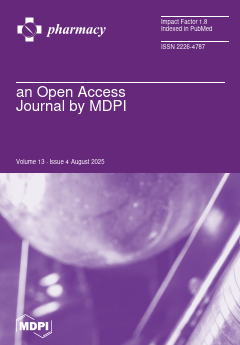Objective: To systematically review the scientific literature on lysergic acid amide (LSA), focusing on its physical, neurobiological, and social effects, as well as its potential risks and therapeutic uses.
Methods: A systematic review was conducted across PubMed, Google Scholar, and Web
[...] Read more.
Objective: To systematically review the scientific literature on lysergic acid amide (LSA), focusing on its physical, neurobiological, and social effects, as well as its potential risks and therapeutic uses.
Methods: A systematic review was conducted across PubMed, Google Scholar, and Web of Science up to December 2023, using keywords such as “ergine,” “lysergic acid amide,” and “legal high.” Studies were included if they reported original human data on the physical, neurobiological, psychological, or social effects of LSA; seventeen studies were included. Animal studies, in vitro research, and non-original articles were excluded. Two independent reviewers screened and selected the studies, with a third resolving discrepancies. Data were extracted using a standardized form. The review followed PRISMA guidelines and was prospectively registered on the Open Science Framework.
Results: LSA is primarily consumed through preparations made from the seeds of Convolvulaceae plants. Reported effects include euphoria, hallucinations, nausea, and anxiety. Severe adverse outcomes, such as psychosis, hypertension, and hospitalization, have also been documented. Some evidence suggests its potential therapeutic application for cluster headaches. However, variability in dosing and misinformation on digital platforms heighten the risks associated with LSA use.
Conclusions: LSA poses significant health risks, exacerbated by online misinformation and variability in its effects, and a lack of scientific studies. Further research is essential to clarify its pharmacological profile, establish guidelines for safe use, and raise public awareness about its dangers.
Full article





